- Home
- slideshows
- miscellaneous
- Satellite images of rivers reveal humanity's abusive relationship with the world's most precious resource
Satellite images of rivers reveal humanity's abusive relationship with the world's most precious resource
North Carolina is still dealing with the aftermath of Hurricane Florence. Here's the Trent River, near Trenton, in July 2017 — long before the catastrophic storm dumped eight trillion gallons of water on the state.

All of that water had to go somewhere. By September 17, 2018, the Trent River crested at nearly 30 feet — double the height where floods for the river begin. Nearby farms, homes, and businesses were inundated, as this picture from September 19 shows.
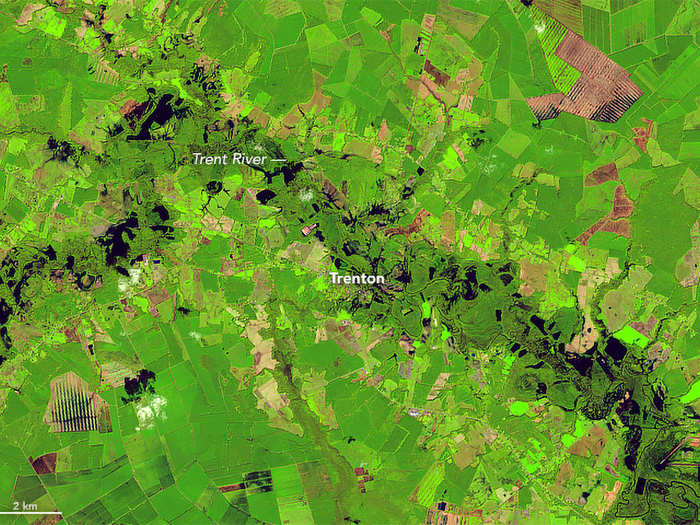
Source: NASA Earth Observatory
Flood waters emptied into the Atlantic Ocean, carrying with them leaves, roots, bark, trash, and other detritus .
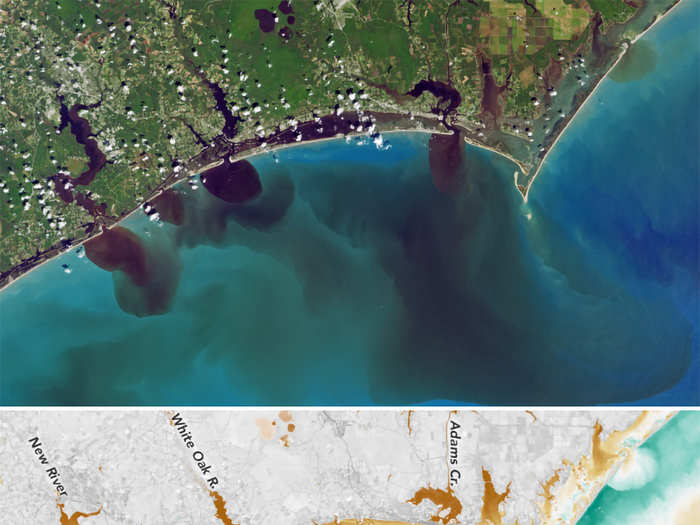
Source: NASA Earth Observatory
In other parts of the world, such as Kazakhstan and Uzebekistan, the problem is too little water instead of too much. In the 1960s, the Soviet Union diverted the Syr Darya and the Amu Darya rivers to help grow food. But over time the Aral Sea shrank.
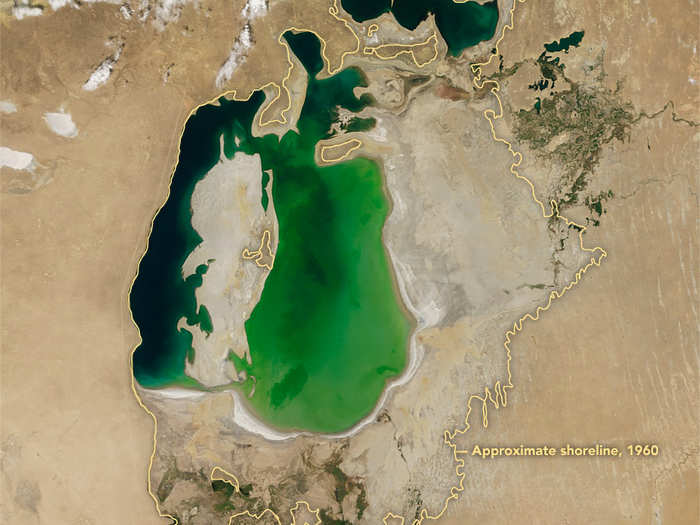
Source: NASA Earth Observatory
"They changed the natural flow of that system, and they changed the entire dynamic for agriculture," Bolten said. "But it was an environmental disaster." Decades of runoff sediments from farming, including fertilizers and pesticides, were exposed to the air and blown around as a hazardous dust.

Source: NASA Earth Observatory
Efforts to recover and preserve some of the Aral Sea's water have mostly floundered, and the ramifications are expansive and ongoing. "The loss of the moderating influence of such a large body of water made winters colder and summers hotter and drier," NASA says.
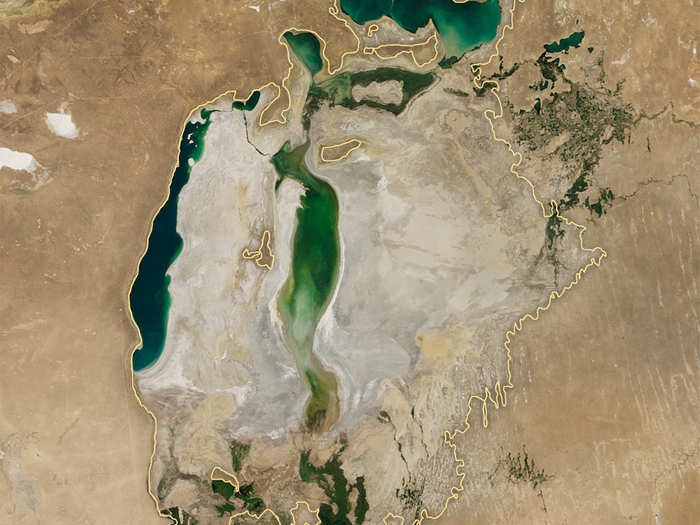
Source: NASA Earth Observatory
The US has its own fraught relationship with dry climates and the control of important waterways, including the 1,450-mile-long Colorado River. Shown here is the Hoover Dam, which provides power to Arizona, California, and Nevada.

"The Colorado used to be a raging river when it met Mexico. It's a trickle now. It's becoming an ephemeral stream," Bolten said. The situation has become apparent at Glen Canyon Dam in Utah, which is also on the Colorado River.
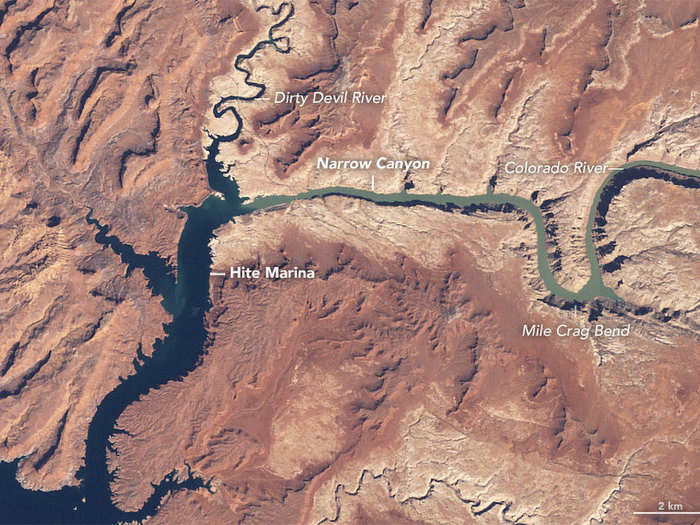
Source: NASA Earth Observatory
Heavy use of Lake Powell's water for irrigation, along with decreasing snowpack and rainfall, has heavily depleted the reservoir, and NASA does not expect the situation to improve with climate change. "Precipitation declines combined with booming urban populations will present a significant challenge to Western water managers in the near future," NASA said.
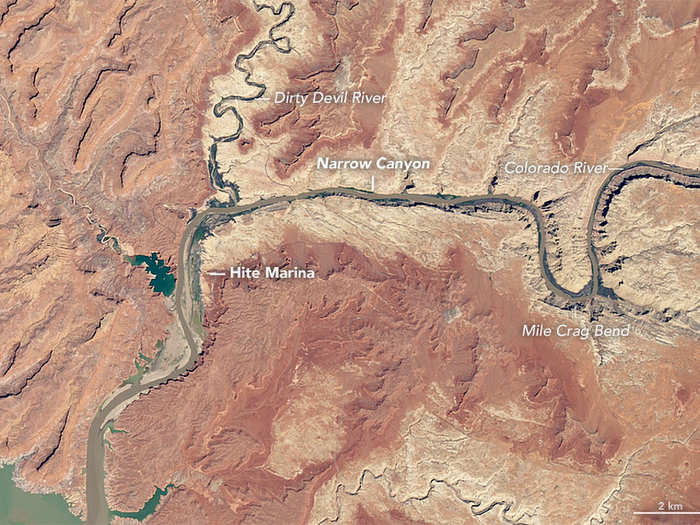
Source: NASA Earth Observatory
Human dependence on river systems is on full display in Egypt's Nile River Valley and Delta (shown here at night in 2012), which NASA says comprises just 5% of the country's land — but is where 97% of its population lives. "Very few rivers flow just in one country, though," Bolten said.
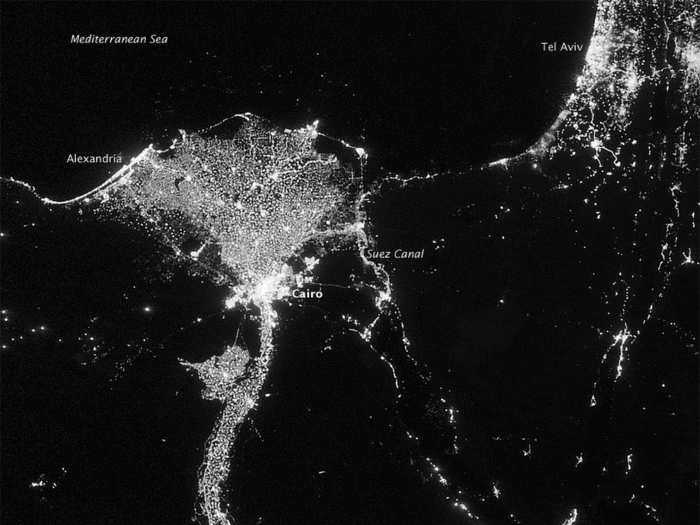
Source: NASA Earth Observatory
However, Bolten added: "There's often political tension, and that leads to difficulties in sharing data and properly managing these resources." The Grand Ethiopian Renaissance Dam project is one such example. While the project stands to benefit Ethiopia, it could affect populations thousands of miles downstream.
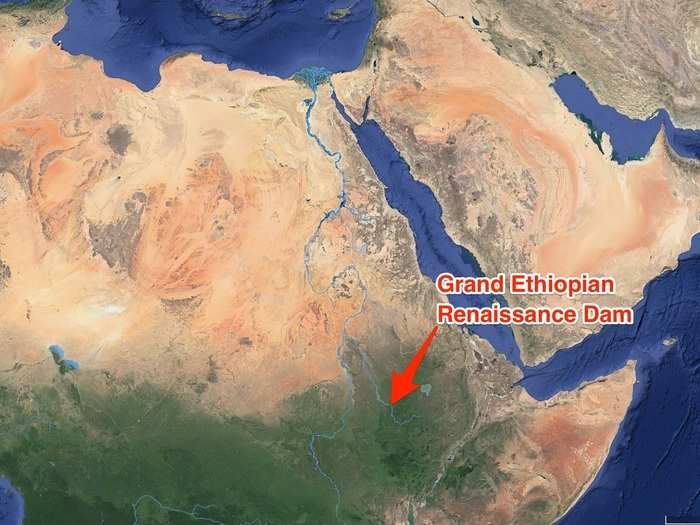
Source: The Conversation
Humans have struggled to deal with the power and influence of rivers beyond floods. In China, the Huang He (or Yellow River) fills with sediments and dumps them into the Yellow Sea. Here's the mouth of the river in 1989.
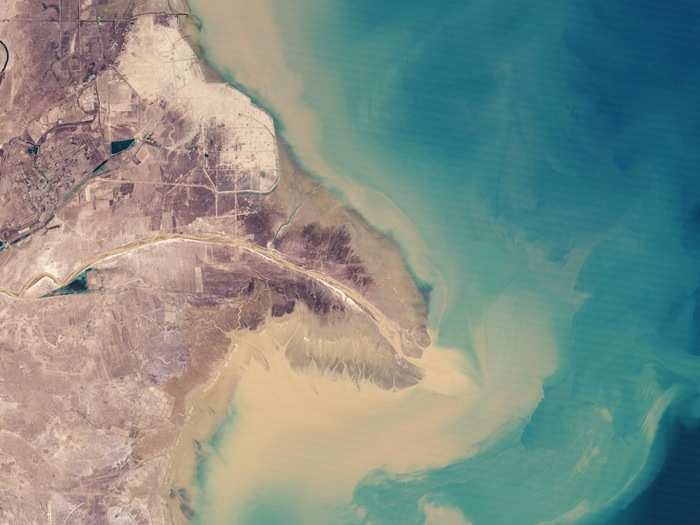
Source: NASA Earth Observatory
China has heavily engineered the river to control flooding, but its mouth — and the sediment it carries — is prone to wandering in location, as the river has done over thousands of years.
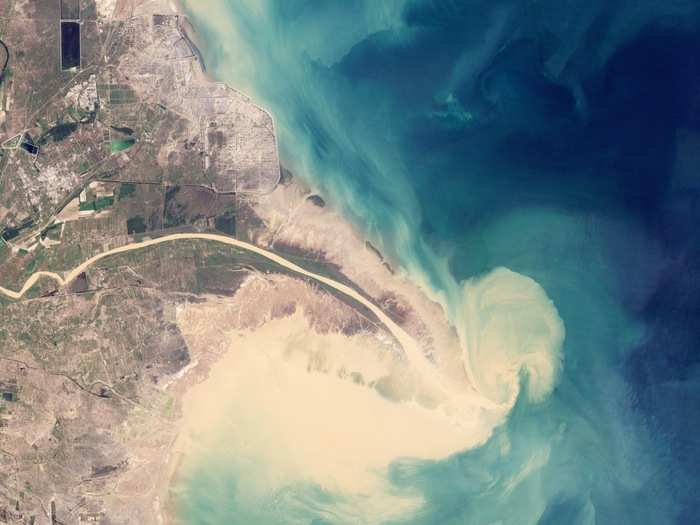
Source: NASA Earth Observatory
In 1996, engineers diverted the river and its sediments away from coastal development on the Yellow Sea.
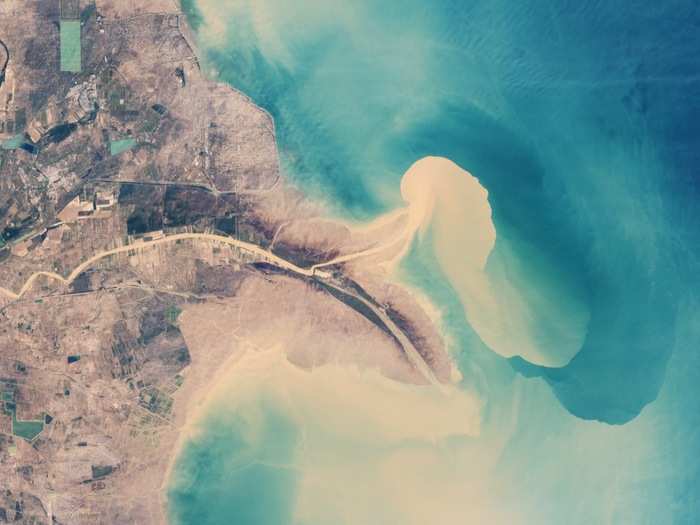
Source: NASA Earth Observatory
This created a new peninsula on the delta by 2004. China's growing upstream population and demand for water has stymied the river's flow in recent years.
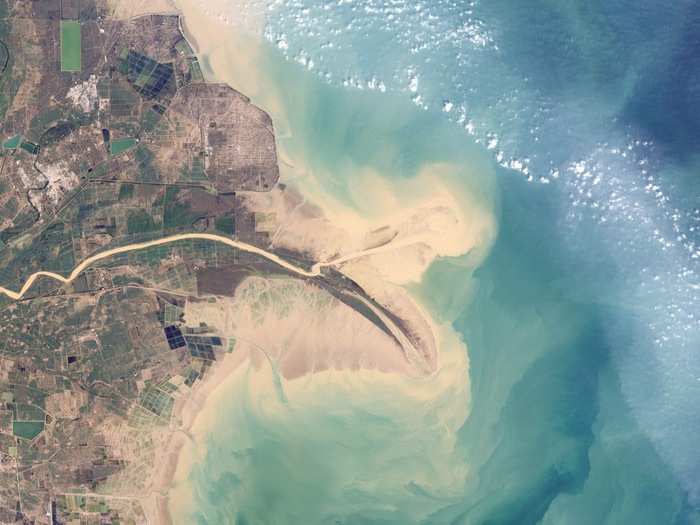
Source: NASA Earth Observatory
NASA says the lack of flow has damaged wetlands that can curb pollution and protect against flooding, and it has caused sediments to build up on the river bottom, further raising the risk of floods.
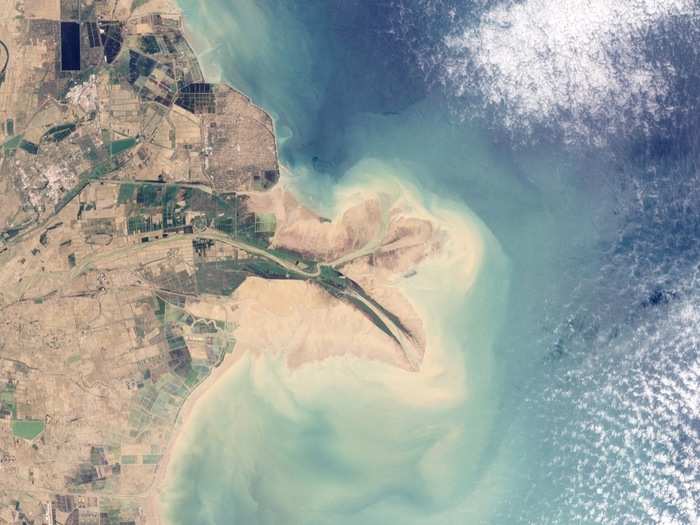
Source: NASA Earth Observatory
In 2016, photos of a blood-red Daldykan River in Norilsk, Russia, spread across the internet. NASA says satellite imagery reveals this was not an unprecedented sight — a similar scene happened in 2001. Pollution from a metal-extracting industrial complex is believed to be the cause.
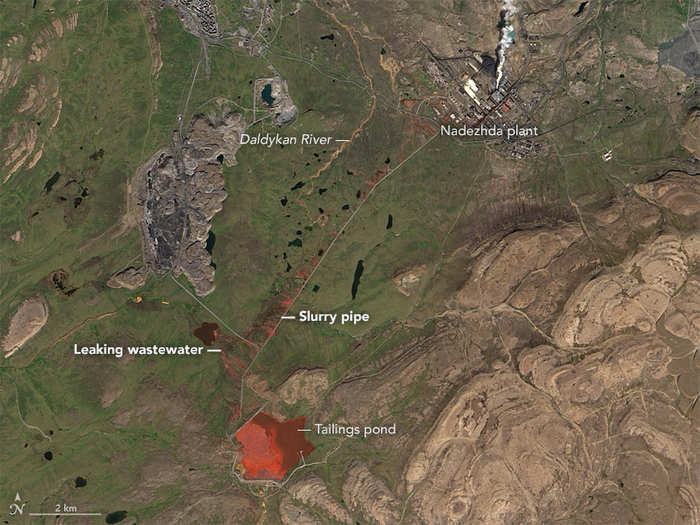
Source: NASA Earth Observatory
Sometimes what can't be seen is most revealing. This satellite image shows the city of New Orleans just south of Lake Pontchartrain. The black feature running through the middle is the Mississippi River, and colors show subsidence: where parts of the city are rising (purples) and sinking (greens).

Source: NASA Earth Observatory
Some of the city's most vital structures sit along the Mississippi, where subsidence appears to be growing over time — and raising the risk of damage by flooding.
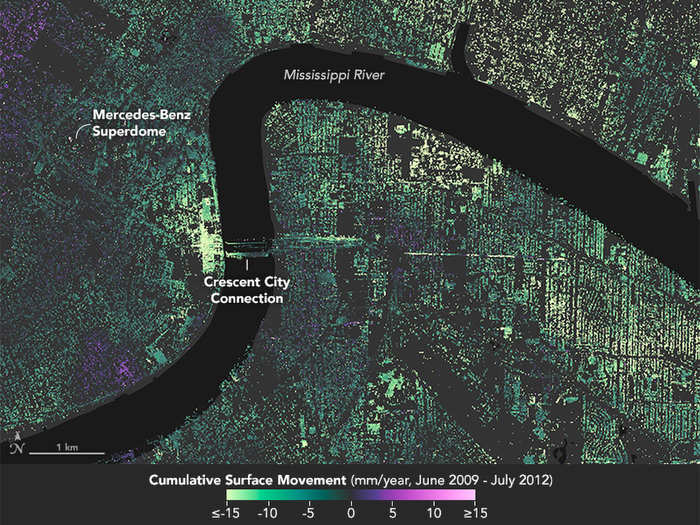
Source: NASA Earth Observatory
River-altering structures like the Oroville Dam in California can create game-changing water and energy resources. But they aren't without risks: structural failures can put downstream communities in harm's way. In fact, accounting for all deaths per unit of electricity generated, hydroelectric dams are one of the most risky power sources.
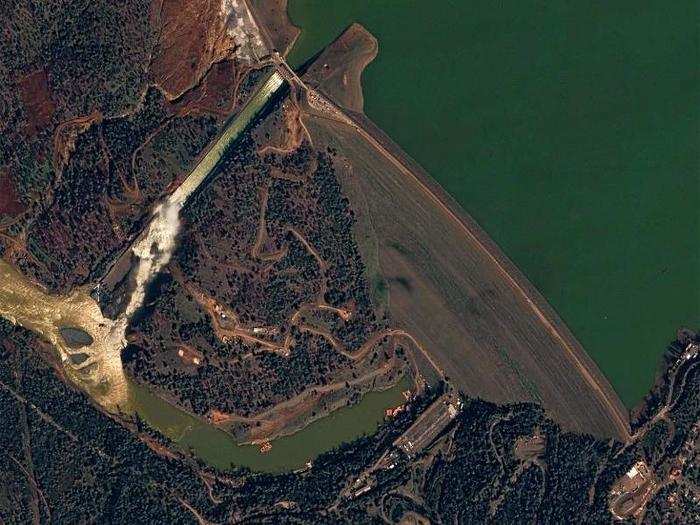
Source: Business Insider
One of Bolten's research areas is the Mekong River system in Southeast Asia. He says about 60 million people in five countries depend on the river basin, making it "one of the most intensely managed rivers in the world." Shown here is the Lower Sesan II dam in Cambodia in February 2017.

Source: NASA Earth Observatory
The reservoir is on the Sesan River and Srepok River, and the dam is expected to bring 400 megawatts of electricity to the region. But the reservoir is displacing communities and decreasing supplies of fish. "The dam is likely a harbinger of things to come," NASA says, adding that several dams will be added to the Mekong in the future.
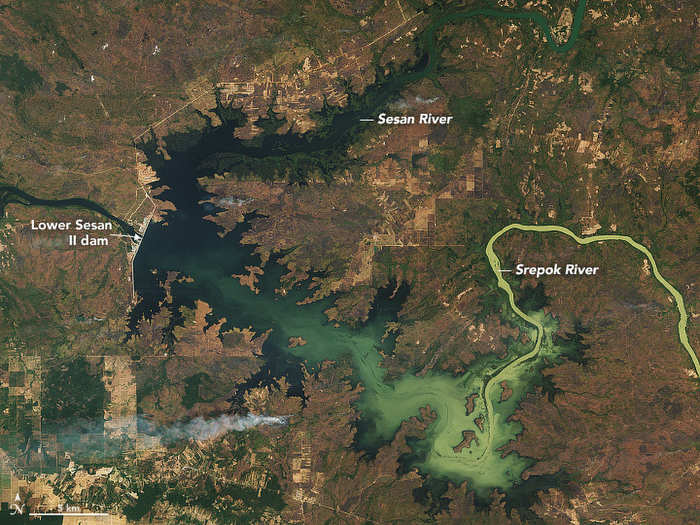
Source: NASA Earth Observatory
Bolten says it's crucial to think of rivers as shared resources. "And not just with our friends and neighbors, but with future generations," he said. "I'm always thinking about what my daughter's reality with water is going to be."
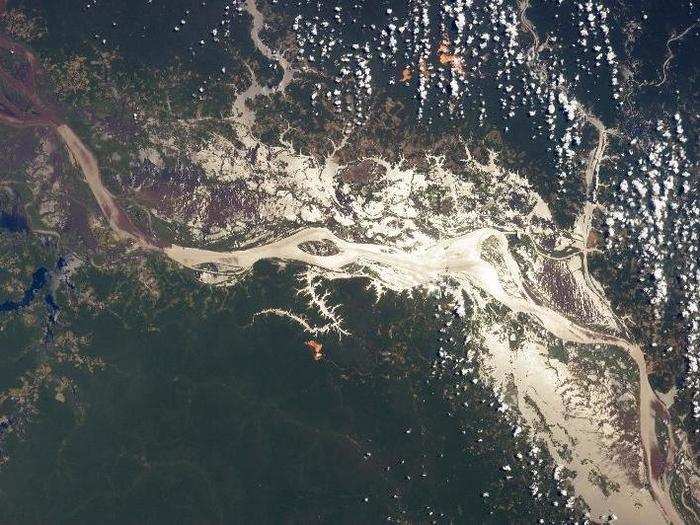
Popular Right Now
Popular Keywords
Advertisement